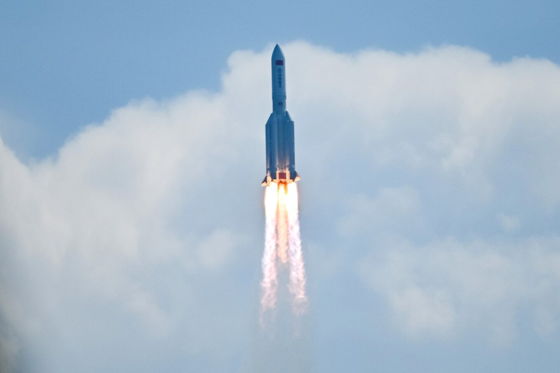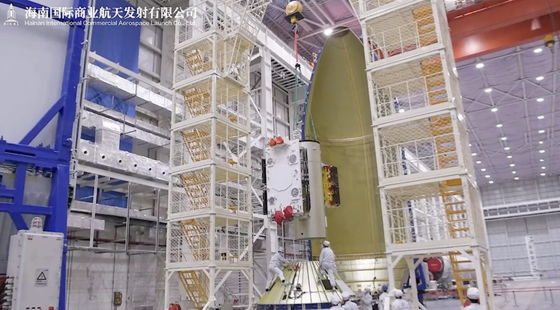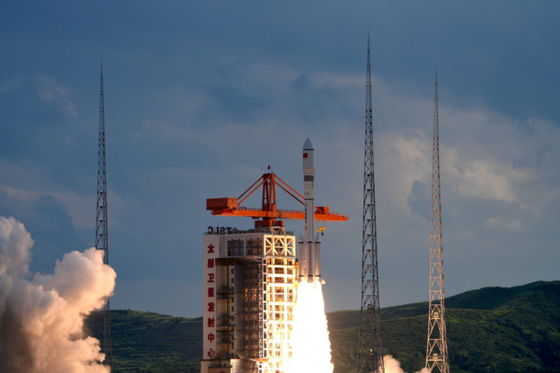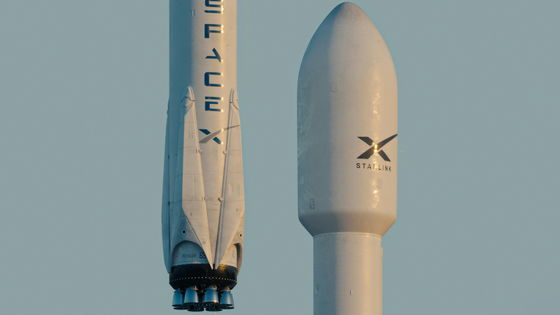What is the purpose of the Chinese government's secretly launched satellite constellation 'Guowang'?

China plans to launch a constellation of 13,000 satellites into low Earth orbit called the ' Guowang .' Technology media Ars Technica has summarized what the purpose of this national network is.
China's Guowang megaconstellation is more than another version of Starlink - Ars Technica

The national satellite network is managed by a company called 'SatNet,' which was established by the Chinese government in 2021. SatNet has released very little information since its founding and does not have its own website. China's space development authority has not revealed any details about the detailed specifications of the satellites SatNet is launching, nor has it expressed any intention to sell its services to consumers.
The network is expected to offer consumer services similar to Starlink, the satellite internet service provided by SpaceX, but Ars Technica reports that it 'has the potential to offer much more than just a Chinese version of Starlink. While the Chinese government has released few details about the network, there is growing evidence that it could provide a tactical advantage to the Chinese military in a future armed conflict in the Western Pacific.'
China's Shangxin satellite constellation is not its only one. Another Chinese satellite constellation, Qianfan, is thought to be similar to Starlink. Qianfan's satellites have a flat shape, making them easy to mount on the tip of a launch vehicle. This is a design technique pioneered by SpaceX for Starlink. Qianfan is scheduled to launch approximately 1,300 satellites in 2024.
On the other hand, the national network is made up of satellites manufactured by multiple companies and launched on multiple types of rockets. The national network is similar to the satellite network known as MILNET by the U.S. military. MILNET is a partnership between the U.S. Space Command and the National Reconnaissance Office , and aims to build a 'hybrid mesh network' using SpaceX's Starshield for a wide range of military applications.
Long March 5 carrying a national satellite

On July 27, 2025, SatNet launched five national satellites. The rockets used to launch national satellites can carry 5 to 10 satellites per launch. Meanwhile, the Falcon 9 used to launch Starlink satellites can carry up to 28 satellites. However, SatNet's launch rockets are superior in that they can carry satellites to altitudes three to four times higher (
According to documents submitted by China to the International Telecommunication Union (ITU), some of China's satellites orbit at an altitude of 500-600 km, roughly the same as Starlink's, while others orbit at an altitude of 1,145 km. However, at the time of writing, all of the satellites launched are at an altitude of 1,145 km.
Because satellites need to be launched to a higher altitude, the number of satellites that a rocket can carry is limited. On the other hand, because satellites are launched to a higher altitude, the area that can be covered by one satellite is wider, and the number of satellites required to build a network is reduced.
Below is a photo of the national satellite released by the Chinese government.

In military terms, the interconnected links for detecting, tracking, targeting, and attacking targets are called the 'kill chain' or 'kill web.' The U.S. Space Force is working with the Space Development Agency (SDA) to advance the development of the kill chain through MILNET and other future satellite networks.
US officials believe that the national network will become China's own kill chain. According to Chinese media reports, the national network satellites could be equipped with a variety of equipment, including broadband communications payloads, laser communications terminals, synthetic aperture radar, and optical remote sensing payloads. If this were to happen, Ars Technica noted that it could create a network similar to the integration of programs like Starshield, the Space Development Agency's planned future satellite constellation, and MILNET.
Adm. Chance Saltzman, Space Force's chief of operations, testified before a Senate committee in June 2025 that he was 'concerned' that China was attempting to establish its own kill chain. He added, 'Space-enabled targeting capabilities have increased the range and accuracy of weapons systems to the point that getting close enough to China to achieve military objectives in the Western Pacific is at risk unless we deny, disrupt, or weaken that capability.' He added, 'This is our most pressing challenge, and Space Force needs space control and counterspace capabilities to disrupt this kill chain.'
Brigadier General Anthony Mastalir, commander of the U.S. Indo-Pacific Space Command, also revealed that the U.S. government is closely watching how China incorporates satellite networks like the National Network into military exercises. 'What's interesting is that China continues to copy the U.S. strategy,' Mastalir said. 'China is pursuing reusability and improving its launch capabilities, which is probably one of China's weaknesses at the moment. It also appears that China has plans to speed up its launch pace.'

China has not yet recovered and reused its launch vehicle boosters, but several Chinese companies are already working on the project. China does not have a company like SpaceX, and its rocket launch pace in 2025 is slightly less than half that of SpaceX. However, as of August 2025, a series of national satellite launches have been taking place, suggesting that China's rocket technology may be improving rapidly, according to Ars Technica.
'China's specific goal is to be able to track and attack high-value U.S. assets when and where they want,' Brigadier General Mastari said. 'Their sensor capabilities are diversified and span multiple orbits, from sensors in geostationary orbit (GEO) to large megaconstellations in low Earth orbit (LEO).' 'So all indications are that they could target U.S. aircraft carriers, tankers, AWACs (hypersonic reconnaissance aircraft), and other high-value airborne assets. This is a strategy to prevent U.S. intervention, and their space architecture is designed for that purpose.'
Related Posts:
in Note, Posted by logu_ii







